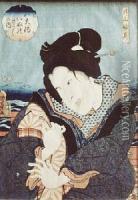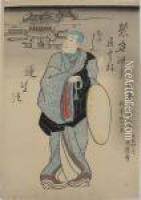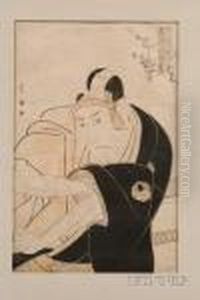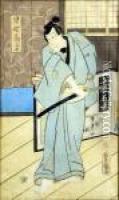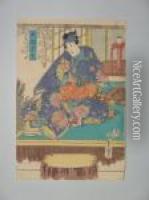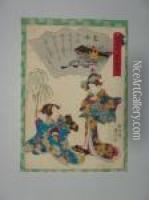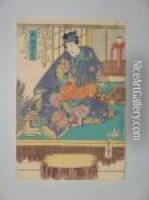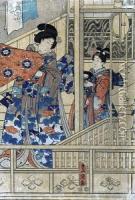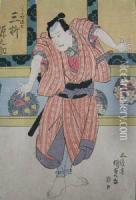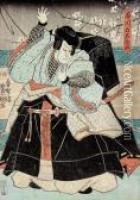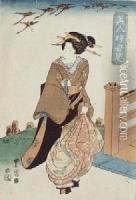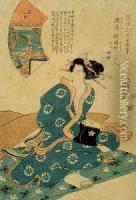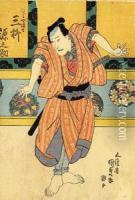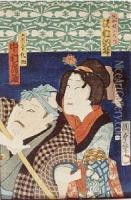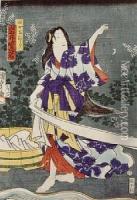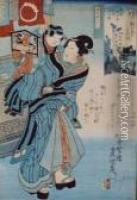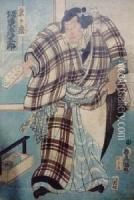Kunisada Paintings
Utagawa Kunisada (歌川 国貞), also known as Utagawa Toyokuni III (三代歌川豊国), was a prolific and commercially successful Japanese ukiyo-e artist who lived during the Edo period. Born in 1786 in Honjo, an eastern district of Edo (present-day Tokyo), Kunisada was the pupil of the renowned ukiyo-e master Toyokuni I. He later took on the name Toyokuni III after his master's death and became one of the key figures in the Utagawa school.
Kunisada's work encompassed a wide variety of genres within the ukiyo-e tradition, including bijin-ga (pictures of beautiful women), yakusha-e (actor prints), sumo-e (sumo wrestler prints), and musha-e (warrior prints). However, he is perhaps best known for his kabuki actor portraits, which captured the flamboyance and drama of the theater. These prints were highly popular among the citizens of Edo, and Kunisada's ability to portray actors in character, with expressive features and dynamic poses, made his work stand out.
His career spanned over five decades, and during this time Kunisada produced a vast number of prints, estimated to be in the tens of thousands. He also created several series of prints, such as the 'Mirror of the Physiology of Eating and Drinking' (Kuishin no ichiran) and 'The True Lineage of the Faithful Samurai' (Seichū gishi den), which were well-received by the public. Kunisada's work was characterized by its vibrant use of color, innovative composition, and an eye for contemporary fashion and detail.
Despite his popularity and prolific output, Kunisada's work was often overshadowed by his contemporaries, such as Hokusai and Hiroshige, in the eyes of later art collectors and historians. However, in recent years, there has been a renewed interest in his oeuvre, leading to a reevaluation of his contribution to the ukiyo-e genre. Kunisada's prints are now recognized for their artistic significance and their valuable insight into the culture and society of Edo-period Japan.
Kunisada passed away in 1865, leaving behind a rich legacy that continues to influence the world of Japanese art. His students, such as Kunichika, went on to carry the torch of the Utagawa school, ensuring that his style and artistry would endure well beyond his lifetime.
